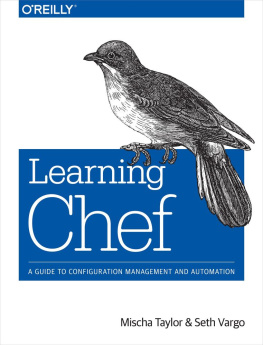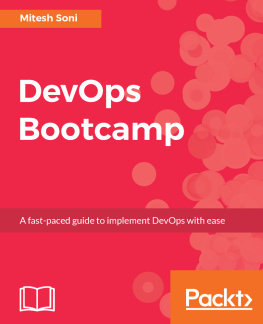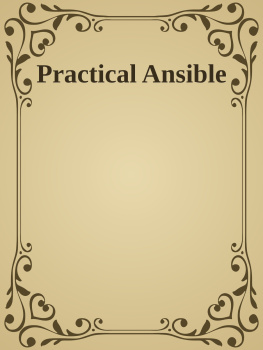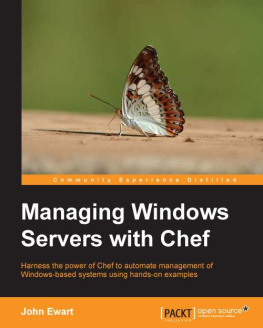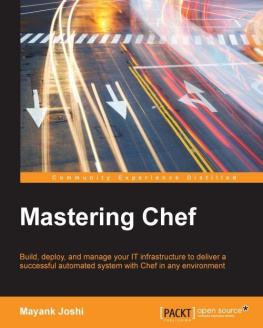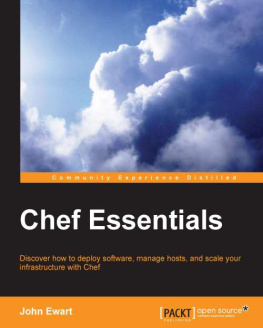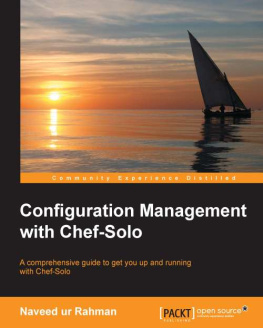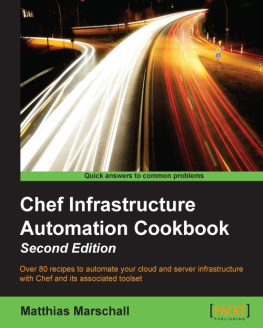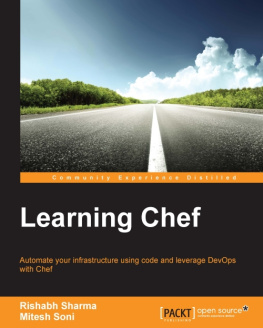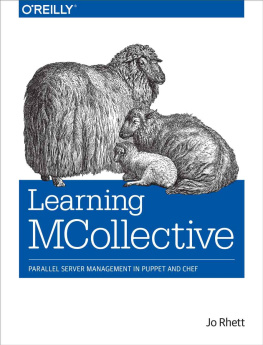Mischa Taylor - Learning Chef A Guide to Configuration Management and Automation
Here you can read online Mischa Taylor - Learning Chef A Guide to Configuration Management and Automation full text of the book (entire story) in english for free. Download pdf and epub, get meaning, cover and reviews about this ebook. year: 2014, publisher: OREILLY, genre: Computer. Description of the work, (preface) as well as reviews are available. Best literature library LitArk.com created for fans of good reading and offers a wide selection of genres:
Romance novel
Science fiction
Adventure
Detective
Science
History
Home and family
Prose
Art
Politics
Computer
Non-fiction
Religion
Business
Children
Humor
Choose a favorite category and find really read worthwhile books. Enjoy immersion in the world of imagination, feel the emotions of the characters or learn something new for yourself, make an fascinating discovery.
- Book:Learning Chef A Guide to Configuration Management and Automation
- Author:
- Publisher:OREILLY
- Genre:
- Year:2014
- Rating:4 / 5
- Favourites:Add to favourites
- Your mark:
Learning Chef A Guide to Configuration Management and Automation: summary, description and annotation
We offer to read an annotation, description, summary or preface (depends on what the author of the book "Learning Chef A Guide to Configuration Management and Automation" wrote himself). If you haven't found the necessary information about the book — write in the comments, we will try to find it.
After teaching you how to write Ruby-based Chef code, this book walks you through different Chef tools and configuration management concepts in each chapter, using detailed examples throughout. All you need to get started is command-line experience and familiarity with basic system administration.
Configure your Chef development environment and start writing recipes
Create Chef cookbooks with recipes for each part of your infrastructure
Use Test Kitchen to manage sandbox testing environments
Manage single nodes with Chef client, and multiple nodes with Chef Server
Use data bags for storing shared global data between nodes
Simulate production Chef Server environments with Chef Zero
Classify different types of services in your infrastructure with roles
Model life stages of your application, including development, testing, staging, and production
Mischa Taylor: author's other books
Who wrote Learning Chef A Guide to Configuration Management and Automation? Find out the surname, the name of the author of the book and a list of all author's works by series.

